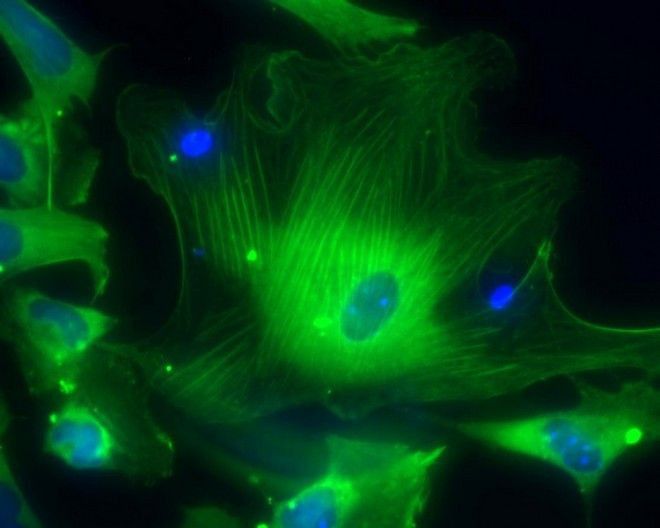New Optical Microscope May Help See Viruses

Scientists have created the world’s most powerful optical microscope that may provide new opportunities to see live viruses.
The team from the University of Manchester in the United Kingdom said they have developed a microscope which shatters the record for the smallest object that can be seen with visible light, surpassing the theoretical limit of optical microscopes. Up to now, the standard optical microscope could only see items around one micrometre -- 0.001 millimetres -- clearly.
To overcome such limitations, scientists combined the optical microscope with a transparent microsphere, dubbed the microsphere nanoscope. They have been able to see 50-nanometer objects under normal lights -- 20 times smaller than the present limits.
This hugely-increased capacity means the scientists could potentially examine the inside of human cells, and examine live viruses for the first time to potentially see what causes them, they said.
Electron microscopes, which use a focused beam of electrons instead of light, can only see the surface of a cell rather than examining its structure and there is no tool to see a live virus visually. Optical fluorescence microscopes can see inside the cells indirectly by dying them, but these dyes cannot penetrate viruses.
Professor Lin Li of Manchester's School of Mechanical, Aerospace and Civil Engineering believes the microscope can be used to detect far smaller images in the future.
Seeing inside a cell directly without dying and seeing living viruses directly could revolutionize the way cells are studied and allow us to examine closely viruses and biomedicine for the first time, Li says.
We believe that is just the start and we will be able to see far smaller items, Li says. Theoretically, there is no limit on how small an object we will be able to see.
Other tiny objects the scientists plan to examine include: anodized aluminum oxide nano-structures, and nano-patterns on Blue-Ray CVC disks, not previously visible with an optical microscope.
© Copyright IBTimes 2024. All rights reserved.





















